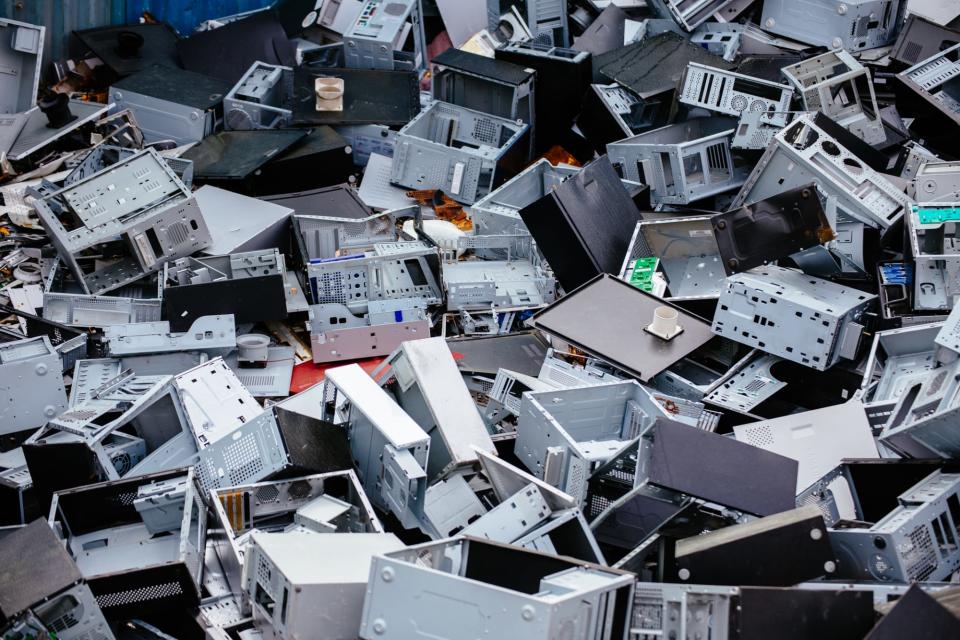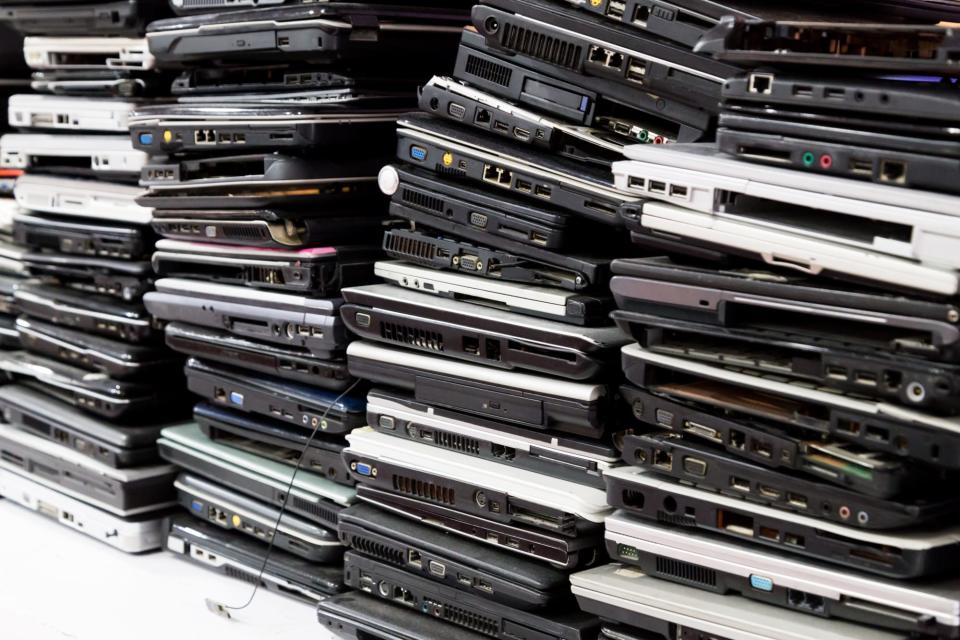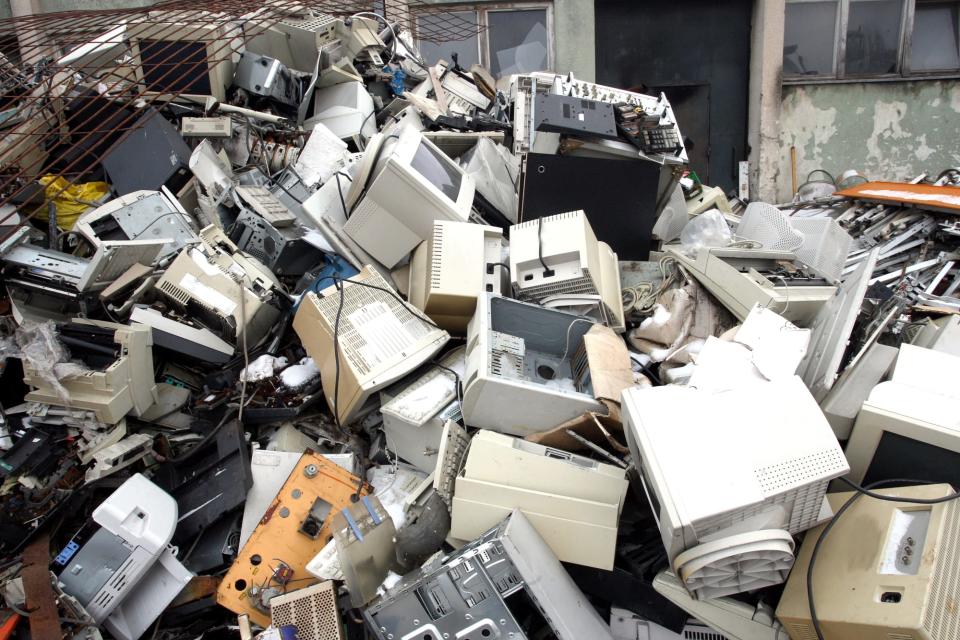We love tech of all shapes and sizes around here, but over the past decade it’s become increasingly obvious that our gadget fervor comes at a cost —especially when it comes to the environment. Metal and plastic don’t fully decompose over time, and almost everything we buy now has rare earth elements in it. But all is not lost as companies and consumers alike have become more cognizant of the problem, and offer possible solutions.
On your end, this means disposing of your old products responsibly, allowing companies and governments to reuse some components and dispose of others in a safe manner. That means taking the things you can’t give away or sell to a recycling center or, at the least, to a store that can pass it along for recycling. Check out our advice below on how to find a place that’ll take your old phones, computers and other broken or outdated gadgets.
National chains


There is no national electronics recycling law at this time, so you won’t find any federal programs to assist you with getting rid of old devices. The USPS does run a program for federal agencies and their employees, but it’s not available to the general public. Instead, the rest of us have to rely on nationwide retailers to toss out our old stuff.
Best Buy
With more than 1,000 locations in the United States, Best Buy may also be local to you, in which case, you can go to a location to drop off items to be recycled. You just need to take it to the customer service counter. They’ll issue you a receipt too, but keep in mind that you can’t claim the drop-off as a deduction on your taxes because Best Buy isn’t a charity.
As of 2023, Best Buy also has a mail-in option. You can purchase a small- ($23, up to 6 pounds) or medium-sized ($30, up to 15 pounds) box from the retailer, fill it up with as many approved gadgets as you can (while staying under the weight limit) and ship it back to Best Buy to be recycled. You can either drop off your boxes at a UPS drop-off point or schedule a UPS pickup (do not drop the boxes off at a Best Buy store).
You can even recycle televisions and monitors, though in most places you’ll be charged a fee of $30 per item to cover the higher costs of transporting and disassembling them. Best Buy’s in-house TV brands of Insignia and Dynex will always be accepted for free, though, as long as they’re smaller than 49 inches. (Consumers in California are not charged the $30 fee, while locations in Pennsylvania charge the fee but in return offer a $30 gift card as reimbursement. Connecticut locations will only accept Insignia and Dynex sets for recycling.) If you’re turning in any desktops, laptops or PC gaming accessories, you’ll get a voucher for 20 percent off toward the purchase of a new Logitech mouse, keyboard, webcam or headset. Just be aware that Best Buy limits you to three items per household per day, including up to two televisions.
Staples
Recycling your stuff at Staples is similar to Best Buy — just bring your products to the checkout counter and an associate will help you out. But you can only bring in seven items a day, and the store won’t accept televisions at all (monitors are allowed). Staples Easy Rewards members also receive points for bringing in goods to be recycled or shredded; the points can be redeemed at checkout for discounts on purchases (200 points = $1 off).
If you can’t make it to a store, Staples also offers a mail-in program. You’ll need to purchase a recycling box first, which start at $20 for a small box and go up to several hundred for a full pallet (only available for commercial locations). You can put as much as you want into a box as long as it fits inside and doesn’t exceed the weight limit (a large box can accept up to 70 pounds). A “serialized” option is also available for an additional charge, which includes an inventory list for everything you send back. The boxes are shipped to you and then back to Staples at no extra cost;, just drop off the sealed packages at your local UPS drop-off point or call for a pickup.
Office Depot
Office Depot has more than 1,300 locations, but unlike Staples and Best Buy, it won’t recycle your old gadgets for free. If you’re only getting rid of a few phones or batteries, those can be turned in at any store for no charge. For everything else, you must purchase a Tech Recycling Box ($8.39 for small, $18.29 for medium, and $28 for large) even if you’re already at the store. Once you have the box, you can fill it with as many items as you can fit inside, including smaller televisions, as long as it doesn’t exceed the weight limit. So it’s a great deal if you have a lot of stuff you want to dispose of. These must be turned in at an Office Depot store; an associate will check to make sure all the items are acceptable and prepare the box for shipping (you’ll be asked to fill out a form).
You can also return used ink and toner cartridges and get $2 each, up to 10 a month, if you’re a rewards member and spend at least $10 in-store on products within the same month.
Home Depot and Lowes
You can dispose of old rechargeable batteries, old phones and CFL bulbs in the dropoff boxes at any of 2,300 Home Depot or 2,200 Lowe’s locations. The bins are usually located in the front of the store, and Home Depot has an 11-pound limit on individual items.
Target
Target locations have drop-off bins for recyclables located near the entrance; in addition to bins for paper and plastics, there is a specially-designated bin for e-waste like cellphones and used ink cartridges.
Manufacturers


If you can’t make it to a retail location, especially when you need to get rid of only one or two items, many companies offer recycling programs for their own products. They’ll even pay for shipping. Some run their own programs while others use outside organizations. We’ve outlined policies from a handful of manufacturers below.
Amazon
Amazon would love for you to use its trade-in program and, if you’re looking to recycle Amazon-branded products like Kindles, Fire TVs and even Ring doorbells, you absolutely should. Amazon will send you a gift card as well as promotional discount to use on a future Amazon device purchase, even if the returned product is non-functional.
For products from other manufacturers that can’t be resold, Amazon offers mail-in recycling. You can send in your busted phones and tablets, as well as select peripherals like keyboards and mice. You’ll just need to fill out some forms online and generate a shipping label, which you can slap on any box. Drop it off at a UPS location, and you’re good to go; Amazon will cover all the costs.
Apple
If your iPhone or MacBook is still in good shape, you should consider selling it, but if it’s too old or beat up you can still score a gift card by turning it into Apple’s recycling program. For iPhones (as well as select handsets from Samsung and Google) and iPads, you’ll be asked to fill out a form attesting to the product’s condition and given a trade-in quote (at the time of writing this, a working iPhone 8 goes for $50 and an iPhone 12 scores you $220). For Macs and Apple Watches, you’ll be asked to provide a serial number as well. Though Apple won’t give you cash for anything it deems too old, broken or otherwise unacceptable, you can still mail it in or bring it to any Apple Store so it can be responsibly disposed of.
Dell
Dell offers drop-off recycling via a partnership with Goodwill. Not every location participates, but there are more than 2,000 that do. And, because it’s a charity, you may even be able to deduct it as a donation on your taxes. Dell also has a mail-back program on its site where you can generate and print out a shipping label and drop the package off at a FedEx location instead.
Epson
You can ship old products back to Epson by simply creating a shipping label on its site and dropping it off at a FedEx location. If you’re located in New York, you can even get free packaging sent to you by calling 866-922-8252. Epson also recommends getting in touch with a local charity via Digitunity, where your old equipment may be refurbished for use by people in need.
HP
If you can, HP recommends taking its products to the nearest Best Buy. HP does have a trade-in program, but it’s geared toward business customers looking to upgrade equipment that still has market value and individual consumers will be redirected to other recycling methods.
Ink and toner cartridges can be returned by mail; the company will mail you an envelope that can hold between 3 and 8 ink cartridges and can be dropped off in a mailbox or at the post office. For toner and large quantities of ink cartridges, you can print out a label and use your own box, or request a box be sent directly to you, which you’ll fill with items and drop off at a UPS location.
Other manufacturers
Many other companies use outside recyclers to dispose of their products, and you’ll often see the same names popping up again and again across different manufacturers. This should simplify things in some cases — you should be able to send in products from multiple sources in one package. You just need to fill in the make and model to generate a prepaid shipping label. However, different states have different rules on what you can return, so the drop-downs for selecting your product may vary by area.
Two major recycling companies you’ll notice a lot are RLG, which covers Acer, Canon, Google, Intel, Lenovo, and Microsoft, and MRM, which recycles products for Brother, Hisense, Hitachi, HTC, Logitech, Panasonic, TCL and Wacom.
States


There may not be a national law dictating that you must recycle your electronics, but at least 26 states have passed rules that vary widely on what they demand of manufacturers and consumers. Almost all states that do collect products for recycling provide this service free, with the bill footed by the companies in some way. Most provide some local programs to help you get rid of your stuff, regardless of whether recycling your gadgets is required or optional.
States where you can no longer dispose of electronics in the regular trash and must recycle them include: California, Connecticut, Illinois, Indiana, Maine, Minnesota, New Jersey, New York, North Carolina, Oregon, Pennsylvania, Rhode Island, South Carolina, Vermont, West Virginia, Wisconsin and the District of Columbia.
The following states have laws requiring manufacturers to pay for recycling, but you, the consumer, are not actually required to recycle your electronics: Hawaii, Maryland, Michigan, Missouri, Oklahoma, Texas, Utah, Virginia, and Washington.
The following states have some special circumstances worth noting:
Connecticut
Does not allow recycling centers to charge you a fee for turning in electronics, so many organizations and retailers that would usually charge for recycling televisions and monitors do not accept them. Because you cannot dispose of them curbside, you can take them to a municipal transfer station for free.
New York
New York State has a law making it illegal to charge a fee at recycling centers, so this is your best bet for disposing of old televisions (retailers can still charge for the service). If you live in a New York City apartment building with 10 or more units, contact your landlord about getting an ecycleNYC drop-off box installed in your building. It’s super convenient and free.
Pennsylvania
Does not allow retailers to charge you a fee to recycle, so places like Best Buy and Staples will not accept most televisions or monitors. Many recycling centers have also closed as a result of underfunding, so check the list of open locations first. Some nonprofit recyclers may still accept the items, and you should check to see if your local government is hosting any drop-off events. Lancaster and Dauphin Counties also still run civic recycling programs.
Virginia
This state does not have a dedicated statewide recycling program, but some localities run their own programs including Fairfax, Loudoun and Rockbridge counties, and cities like Arlington. Check each municipality’s site for details.
Cell phones


Cell phones are the easiest gadget to recycle — if you haven’t already decided to sell yours off on eBay or via sites like Decluttr and ecoATM. But, if you can’t or won’t make some cash off of it, you can send it to:
Call2Recycle, which has drop-off centers all over the country in many chain stores, including Lowes and Home Depot. It will also accept rechargeable batteries.
Cell Phones for Soldiers accepts phones in any condition and sells them to refurbishers or recyclers. The proceeds go toward purchasing phone cards for troops so they can call their friends and family back home. To be clear, the phones are not given directly to the soldiers.
The three major US carriers — Verizon, AT&T, and T-Mobile — all offer free recycling. You can trade in your old device in-store or send it in for a credit toward a new phone, or let them straight up recycle it. AT&T also participates in Cell Phones for Soldiers.
If you do decide to try your luck with ecoATM to see if your old phone is still worth a few bucks and it turns out it’s worth nothing, you can at least rest easy knowing that the company will also recycle your phone responsibly.
Read the original article here